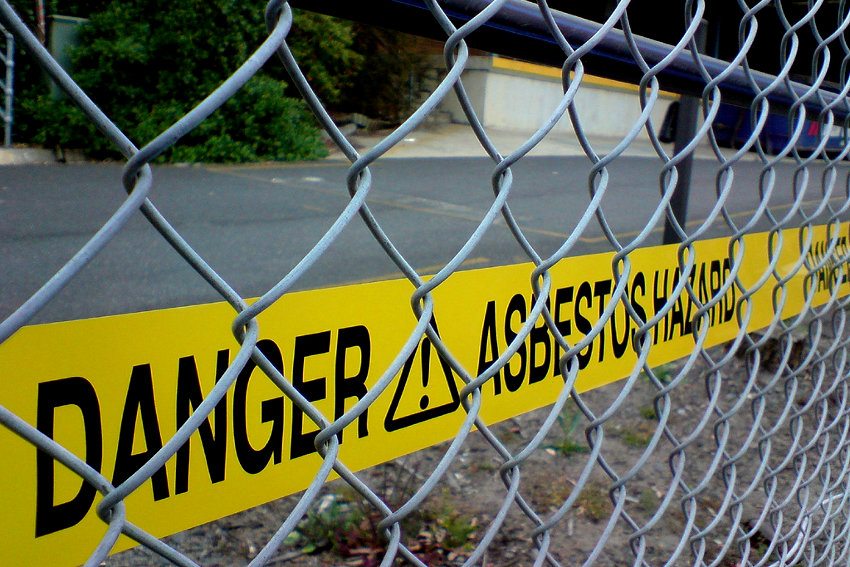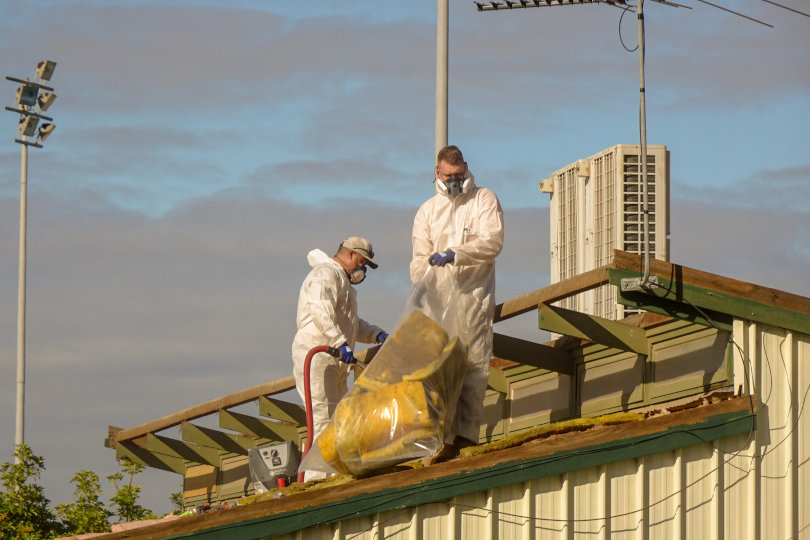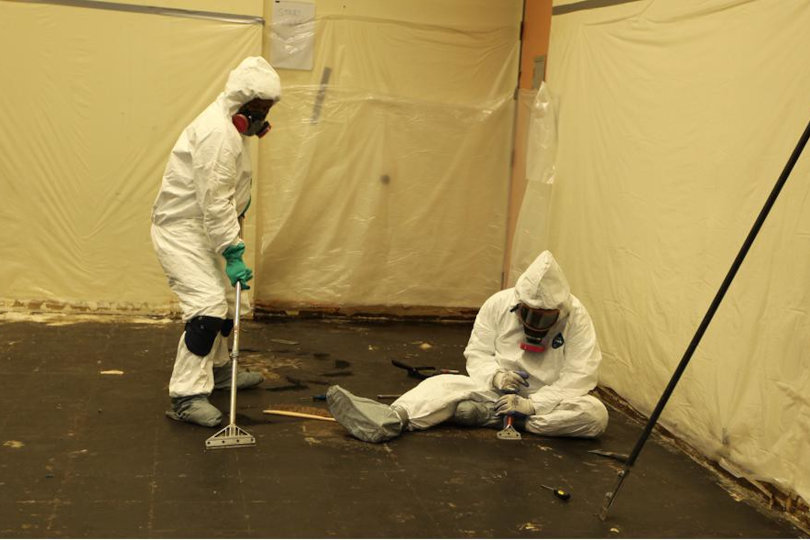When it comes to asbestos removal, one of the first questions that property owners have is, “Can I remove the asbestos myself or should I hire a pro?” After all, why pay to get something done when you can do it yourself?
Well, here’s the thing. As with anything, you can implement a DIY asbestos removal, if you want to.
But, it’s very important to know that asbestos is a toxic chemical and removing it isn’t easy. Not many property owners have the technical know-how or the equipment to safely remove and dispose of asbestos from their homes or commercial space.

If your DIY asbestos removal is done wrongly, the result could be extremely dangerous – even downright fatal if there are pets, young children or people with illnesses in the building.
The medical reality of DIY asbestos removal
In order to understand why you shouldn’t even consider removing the asbestos yourself, we need to explore the medical realities of coming into contact with asbestos.
Asbestos refers to a complex compound of different minerals, that ultimately form a hydrous magnesium silicate combination. This asbestos occurs naturally in the building, after multiple chemicals in the construction react with each other. Based on which minerals form the asbestos compound, you can get any of the 6 types of asbestos on your property –
- Anthophyllite – This is usually found on construction materials and insulation products. It is typically white or grey or dull green. Exposure can result in aggressive cancer in the membranes of the abdomen, lungs and heart.
- Chrysotile – This is the most often observed asbestos type in properties. It can be found in the walls, roof, ceilings and floors of the property. It is white in colour and can cause gastrointestinal cancer, larynx cancer and malignant mesothelioma from direct and extended exposure.
- Crocidolite – This mineral is also called blue asbestos. It can be found on pipe insulation, coatings, cement constructions and plastic used in the building. It can cause severe scarring in the lungs, along with mild-to-severe pulmonary fibrosis. In very serious Crocidolite exposure, there is also a high risk of lung cancer. In fact, of all asbestos types, this is the most dangerous and with the highest fatality rate because its fibres are very thin and easily get lodged in the lungs.
- Amosite – This asbestos can be found in the ceiling tiles, building insulation and cement sheets. It is brown in colour and just like other forms of asbestos, can cause both benign and malignant cancers in the lungs, heart and gastrointestinal tract. Colorectal and stomach cancers are rare with this asbestos but possible.
- Actinolite & Tremolite – Both Tremolite and Actinolite are asbestos that is not often found in building constructions. But in the rare instance that they are observed, they can typically be found as contaminants in chrysotile asbestos. You can even Actinolite & Tremolite in other types of materials, such as –
- Talc – It is a very soft material and is often used in construction in paint and ceramics.
- Vermiculite – It is often used as insulation material and packing material.
These two types of asbestos are very hazardous and can make residents susceptible to asbestosis. Symptoms of this condition include –
- Breathing trouble.
- Wheezing.
- Severe coughing that persists.
- Chest pain.
- Shoulder pain.
- Swollen fingertips.
- Fatigue.
If asbestosis isn’t treated quickly, it may result in more serious medical conditions like pleural disease, lung cancer and cancer in the lining of the heart, testicles, abdomen and lungs (mesothelioma).
The truth is, you’ll need knowledge on identifying asbestos and determining how risky it is to the people using the premises. Then, you’ll need special gear – such as the right protective clothing and equipment – to remove asbestos from your property yourself and to keep yourself safe. Third, you’ll need to know how to safely and sustainably dispose of the asbestos, so it doesn’t negatively affect someone else.
This expertise and knowledge are hard to gain and if foregone, can result in unsafe asbestos removal practices. This in turn can put you and your loved ones or your staff at risk of the above-discussed medical conditions.

DIY asbestos removal is not legal everywhere in Australia
The medical threats of asbestos removal aside, you need to also remember that not every state or territory legalizes DIY asbestos removal.
Some places in Australia actively discourage DIY asbestos removal, unless it meets particular criteria. For example, everywhere apart from the Australian Capital Territory, building owners can themselves remove any non-friable asbestos smaller than 10m². What this means is that the asbestos should not crumble or disperse in any way while being removed. If the asbestos is non-friable but larger than 10m², then a professional asbestos removal company needs to be contacted.
In the Australian Capital Territory, on the other hand, there is a complete and total ban on DIY asbestos removal. Every asbestos removal work must be carried out by a trained and qualified professional only.
If in these cases, you are found to have removed asbestos yourself without professional help, you may be liable to a fine or punishment from your local authorities.
Insurance companies won’t support DIY removal
What if you are legally allowed to do DIY asbestos removal? Well, it’s still better to give this a second thought, because of insurance.
Most insurance companies do not offer coverage for DIY asbestos removal, purely because of the high risks involved in the job. This includes both building-related insurance and medical insurance.
A qualified asbestos removal company will have the proper business insurance policies that offer adequate coverage for the variety of risks involved in professional asbestos removal. You won’t have to worry about high removal expenses, clean-up and disposal costs and any other damages that may be incurred during asbestos removal.

Hire an experienced asbestos removal professional and reduce your risks
Ultimately, the best choice between DIY asbestos removal and professional asbestos removal will always be the latter – hiring a pro.
Professional asbestos removal companies like nswasbestosremoval.com.au have the equipment and gear needed to conduct safe and quick asbestos removal and disposal. They will have adequate insurance coverage, reducing your liability and risk. Finally, the removalists will be trained to undertake the risky job of asbestos removal, without compromising their own safety and the safety of others. More importantly, they will have the knowledge of how to handle different types of asbestos and what to do if particular sections look highly friable and at risk of breakage.
You can trust the team of asbestos removal professionals at NWS Asbestos Removal to come over to your property, conduct a thorough inspection and perform the asbestos removal. We are renowned for our quality of work and on-site safety measures. Contact us for more information.







